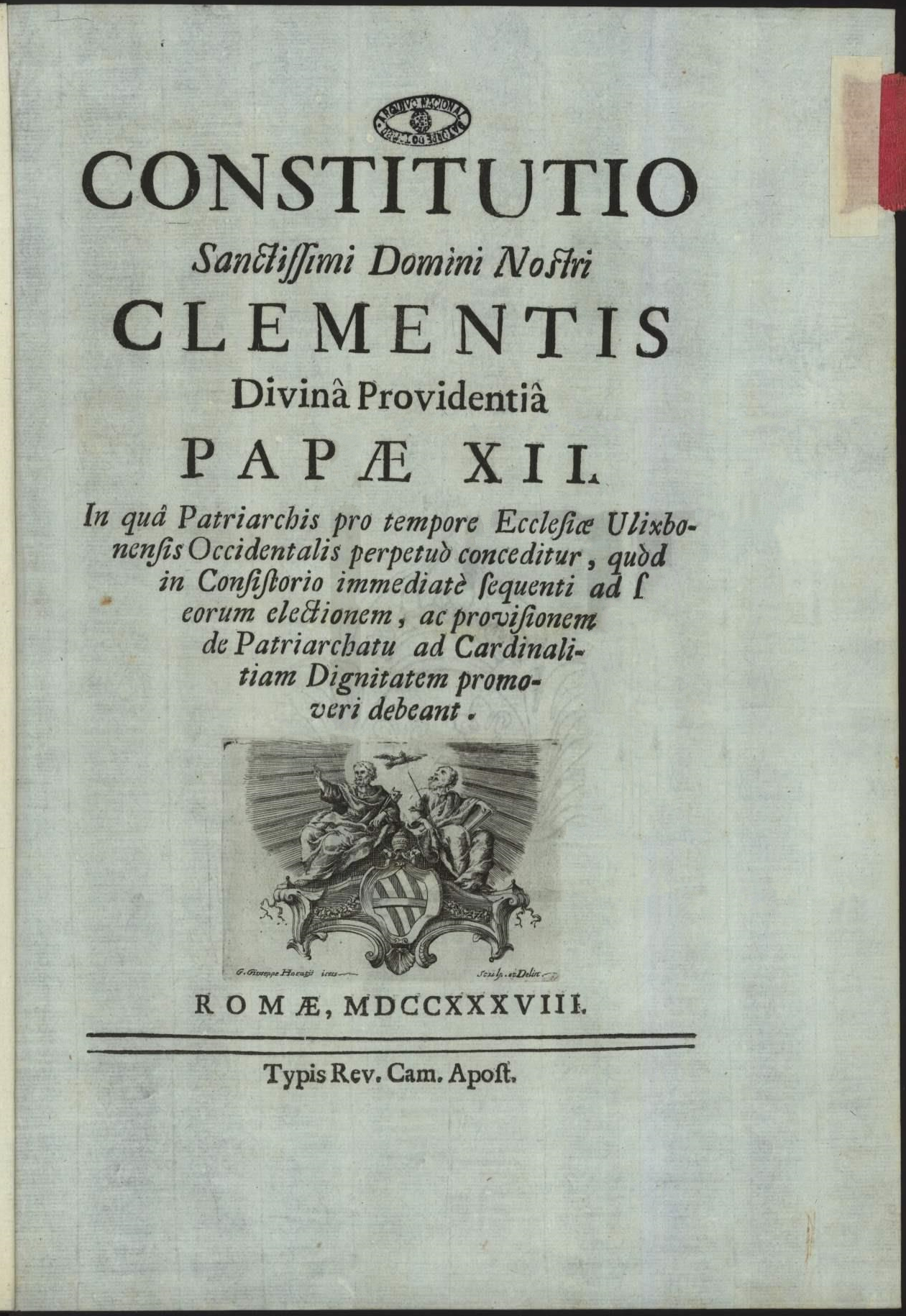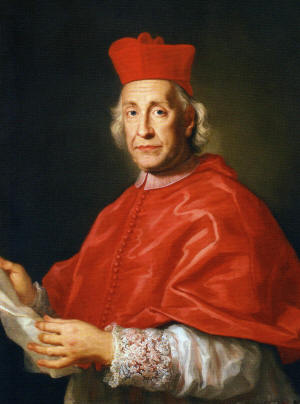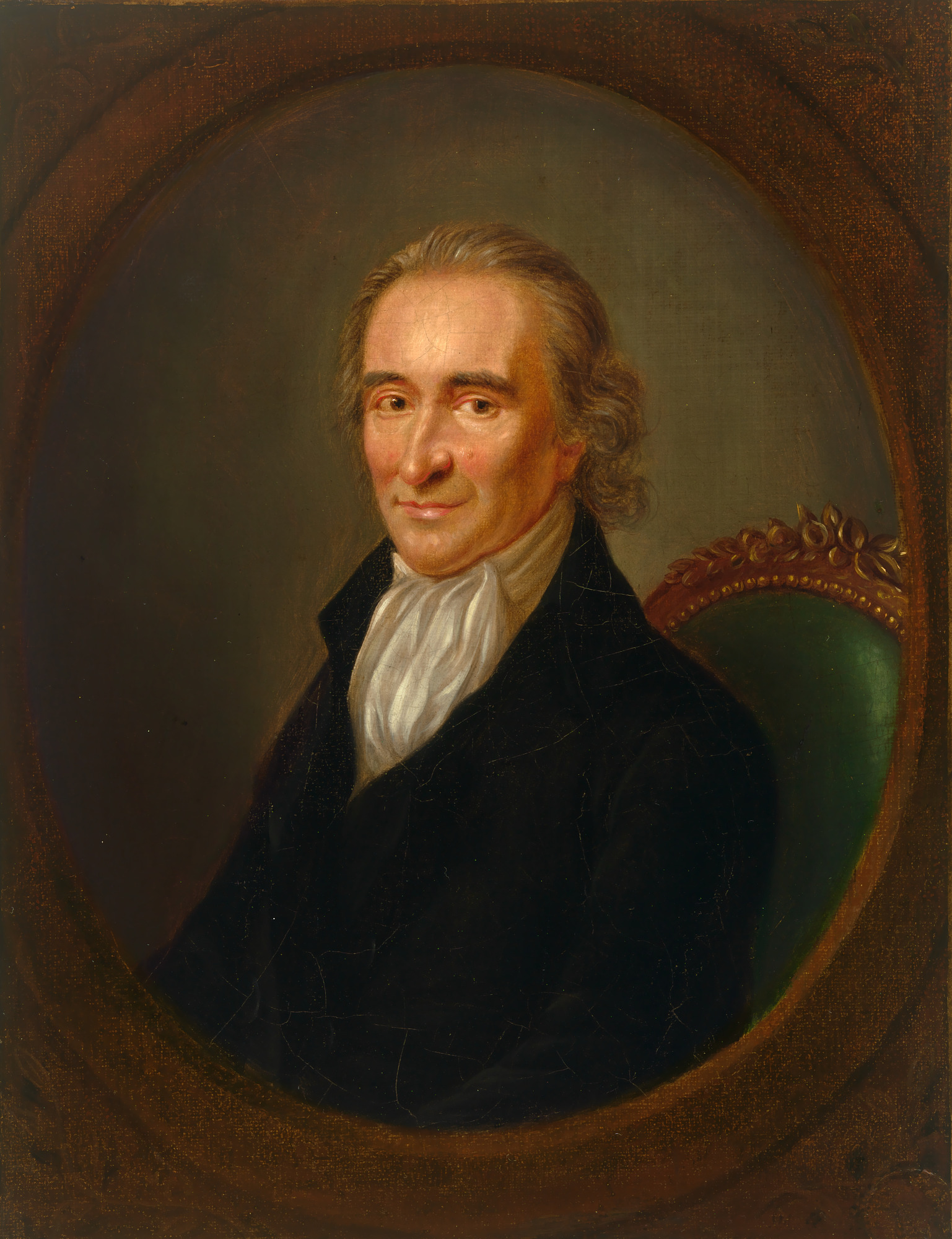|
Inter Praecipuas Apostolici Ministerii
''Inter praecipuas apostolici ministerii'' () was a papal bull issued by Pope Clement XII, on 17 December 1737, establishing that whoever was appointed Patriarchate of Lisbon, Patriarch of Lisbon was to be elevated to the rank of Cardinal (Catholic Church), cardinal in the next consistory. Lisbon remains the only episcopal see accorded this distinction. Until 2013, all Popes honored this commitment. Others like the Patriarch of Venice used to be made cardinals in the consistory following their appointment, but only by tradition. After the Second Vatican Council, cardinals turn non-electors upon reaching the age of 80. By tradition there should not be two cardinal electors from the same Episcopal see, see, so that in the case of an existing Patriarch Emeritus, the privilege of the new Patriarch of Lisbon becoming a Cardinal only applies in the next consistory after the former Patriarch dies or reaches the age of 80. The last time this privilege was used was for Manuel Clement ... [...More Info...] [...Related Items...] OR: [Wikipedia] [Google] [Baidu] |
Papal Bull
A papal bull is a type of public decree, letters patent, or charter issued by the pope of the Catholic Church. It is named after the leaden Seal (emblem), seal (''bulla (seal), bulla'') traditionally appended to authenticate it. History Papal bulls have been in use at least since the 6th century, but the phrase was not used until around the end of the 13th century, and then only internally for unofficial administrative purposes. However, it had become official by the 15th century, when one of the offices of the Apostolic Chancery was named the "register of bulls" ("''registrum bullarum''"). By the accession of Pope Leo IX in 1048, a clear distinction developed between two classes of bulls of greater and less solemnity. The majority of the "great bulls" now in existence are in the nature of confirmations of property or charters of protection accorded to monasteries and religious institutions. In an era when there was much fabrication of such documents, those who procured bulls ... [...More Info...] [...Related Items...] OR: [Wikipedia] [Google] [Baidu] |
Pope Clement XII
Pope Clement XII (; ; 7 April 16526 February 1740), born Lorenzo Corsini, was head of the Catholic Church and ruler of the Papal States from 12 July 1730 to his death in February 1740. Clement presided over the growth of a surplus in the papal finances. He thus became known for building the new façade of the Basilica of Saint John Lateran, beginning construction of the Trevi Fountain, and the purchase of Cardinal Alessandro Albani's collection of antiquities for the papal gallery. In his 1738 bull , he provides the first public papal condemnation of Freemasonry. Early life Lorenzo Corsini was born in Florence in 1652 as the son of Bartolomeo Corsini, Marquis of Casigliano, and Elisabetta Strozzi, the sister of the Duke of Bagnuolo. Both of his parents belonged to the old Florentine nobility. He was a nephew of Cardinal Neri Corsini and was a distant relative of Saint Andrew Corsini. Corsini studied at the Jesuit Roman College in Rome and also at the University of Pi ... [...More Info...] [...Related Items...] OR: [Wikipedia] [Google] [Baidu] |
Patriarchate Of Lisbon
The Metropolitan Patriarchate of Lisbon () is a Latin Church ecclesiastical territory or patriarchal archdiocese of the Catholic Church in Lisbon, the capital of Portugal. Its archiepiscopal see is the Patriarchal Cathedral of St. Mary Major, in Lisbon. The patriarchate also has three minor basilicas: the Basilica of Our Lady of the Martyrs and Basilica of the Most Sacred Heart of Jesus in Estrela, both in Lisbon; the Basilica of Our Lady and St. Anthony in Mafra; and two World Heritage Site monasteries: the Monastery of the Hieronymites, in Lisbon, and the Monastery of Saint Mary of Alcobaça, in Alcobaça. Patriarchate today The patriarchate pastorally served, as per 2014, 1,648,885 Catholics (86% of 1,924,650 total) on 3,735 km2 in 285 parishes and 604 missions, with 543 priests (291 diocesan, 252 religious), 84 deacons, 1,505 lay religious (401 brothers, 1,104 sisters) and 54 seminarians. History The diocese of Lisbon was created in the 4th century, but it ... [...More Info...] [...Related Items...] OR: [Wikipedia] [Google] [Baidu] |
Cardinal (Catholic Church)
A cardinal is a senior member of the clergy of the Catholic Church. As titular members of the clergy of the Diocese of Rome, they serve as advisors to the pope, who is the bishop of Rome and the visible head of the worldwide Catholic Church. Cardinals are chosen and formally created by the pope, and typically hold the title for life. Collectively, they constitute the College of Cardinals. The most solemn responsibility of the cardinals is to elect a new pope in a conclave, almost always from among themselves, with a few historical exceptions, when the Holy See is vacant. During the period between a pope's death or resignation and the election of his successor, the day-to-day governance of the Holy See is in the hands of the College of Cardinals. The right to participate in a conclave is limited to cardinals who have not reached the age of 80 years by the day the vacancy occurs. With the pope, cardinals collectively participate in papal consistories, in which matters of im ... [...More Info...] [...Related Items...] OR: [Wikipedia] [Google] [Baidu] |
Manuel Clemente
Manuel José Macário do Nascimento Clemente, GCC (; born 16 July 1948), officially Manuel III, is a Portuguese prelate of the Catholic Church. He was the Metropolitan Patriarch of Lisbon from 2013 to 2023 and a cardinal since 14 February 2015. He has been a bishop since 1999 and was Bishop of Porto from 2007 to 2013. Biography and education Manuel was born on 16 July 1948 at Torres Vedras, Portugal, to Francisco de Nascimento Clemente and Maria Sofia Correia Lopes Macário. He entered the Major Seminary of Christ the King of the Groves in 1973 and graduated from the University of Lisbon a year later with a degree in history. He also received a degree in theology in 1979 at the Catholic University of Portugal where he taught Church History beginning in 1975. He also received a Doctorate in Historical Theology with his thesis titled "On the origins of contemporary apostolate in Portugal: The "Catholic Society" (1843–1853)". Priest Manuel was ordained a priest on 29 June 19 ... [...More Info...] [...Related Items...] OR: [Wikipedia] [Google] [Baidu] |
Patriarch Of Venice
The Patriarch of Venice (; ) is the ordinary of the Patriarchate of Venice. The bishop is one of only four patriarchs in the Latin Rite of the Catholic Church. The other three are the Patriarch of Lisbon, the Patriarch of the East Indies and the Latin Patriarch of Jerusalem. Presently, the only advantage of this purely formal title is the bishop's place of honor in papal processions. In the case of Venice, an additional privilege allows the patriarch, even if he is not a cardinal, the use of the colour red in non-liturgical vestments. In that case, the red biretta is topped by a tuft, as is the custom with other bishops who are not cardinals. The diocese of Venice was created in 774 as suffragan of the Patriarchate of Grado. It was only in 1451 [...More Info...] [...Related Items...] OR: [Wikipedia] [Google] [Baidu] |
Second Vatican Council
The Second Ecumenical Council of the Vatican, commonly known as the or , was the 21st and most recent ecumenical council of the Catholic Church. The council met each autumn from 1962 to 1965 in St. Peter's Basilica in Vatican City for sessions of 8 and 12 weeks. Pope John XXIII convened the council because he felt the Church needed "updating" (in Italian: '' aggiornamento''). He believed that to better connect with people in an increasingly secularized world, some of the Church's practices needed to be improved and presented in a more understandable and relevant way. Support for ''aggiornamento'' won out over resistance to change, and as a result 16 magisterial documents were produced by the council, including four "constitutions": * '' Dei verbum'', the ''Dogmatic Constitution on Divine Revelation'' emphasized the study of scripture as "the soul of theology". * '' Gaudium et spes'', the ''Pastoral Constitution on the Church in the Modern World'', concerned the promotion ... [...More Info...] [...Related Items...] OR: [Wikipedia] [Google] [Baidu] |
Episcopal See
An episcopal see is the area of a bishop's ecclesiastical jurisdiction. Phrases concerning actions occurring within or outside an episcopal see are indicative of the geographical significance of the term, making it synonymous with ''diocese''. The word ''see'' is derived from Latin , which in its original or proper sense denotes the seat or chair that, in the case of a bishop, is the earliest symbol of the bishop's authority. This symbolic chair is also known as the bishop's . The church in which it is placed is for that reason called the bishop's cathedral, from Latin , meaning the 'church of the '. The word ''throne'' is also used, especially in the Eastern Orthodox Church, both for the chair and for the area of ecclesiastical jurisdiction. The term ''see'' is also used of the town where the cathedral or the bishop's residence is located. Catholic Church Within Catholicism, each diocese is considered to be a see unto itself with a certain allegiance to the See of Rome. ... [...More Info...] [...Related Items...] OR: [Wikipedia] [Google] [Baidu] |
1737 Works
Events January–March * January 5 – Spain and the Holy Roman Empire sign instruments of cession at Pontremoli in the Grand Duchy of Tuscany in Italy, with the Empire receiving control of Tuscany and the Grand Duchy of Parma and Piacenza, in return for Don Carlos of Spain being recognized as King of Naples and King of Sicily. * January 9 – The Empires of Austria and Russia enter into a secret military alliance that leads to Austria's disastrous entry into the Russo-Turkish War. * January 18 – In Manila, a peace treaty is signed between Spain's Governor-General of the Philippines, Fernándo Valdés y Tamon, and the Sultan Azim ud-Din I of Sulu, recognizing Azim's authority over the islands of the Sulu Archipelago. * February 20 – France's Foreign Minister, Germain Louis Chauvelin, is dismissed by King Louis XV's Chief Minister, Cardinal André-Hercule de Fleury * February 27 – French scientists Henri-Louis Duhamel du Monceau and Geor ... [...More Info...] [...Related Items...] OR: [Wikipedia] [Google] [Baidu] |
18th-century Papal Bulls
The 18th century lasted from 1 January 1701 (represented by the Roman numerals MDCCI) to 31 December 1800 (MDCCC). During the 18th century, elements of Enlightenment thinking culminated in the Atlantic Revolutions. Revolutions began to challenge the legitimacy of monarchical and aristocratic power structures. The Industrial Revolution began mid-century, leading to radical changes in human society and the environment. The European colonization of the Americas and other parts of the world intensified and associated mass migrations of people grew in size as part of the Age of Sail. During the century, slave trading expanded across the shores of the Atlantic Ocean, while declining in Russia and China. Western historians have occasionally defined the 18th century otherwise for the purposes of their work. For example, the "short" 18th century may be defined as 1715–1789, denoting the period of time between the death of Louis XIV of France and the start of the French Revolut ... [...More Info...] [...Related Items...] OR: [Wikipedia] [Google] [Baidu] |





